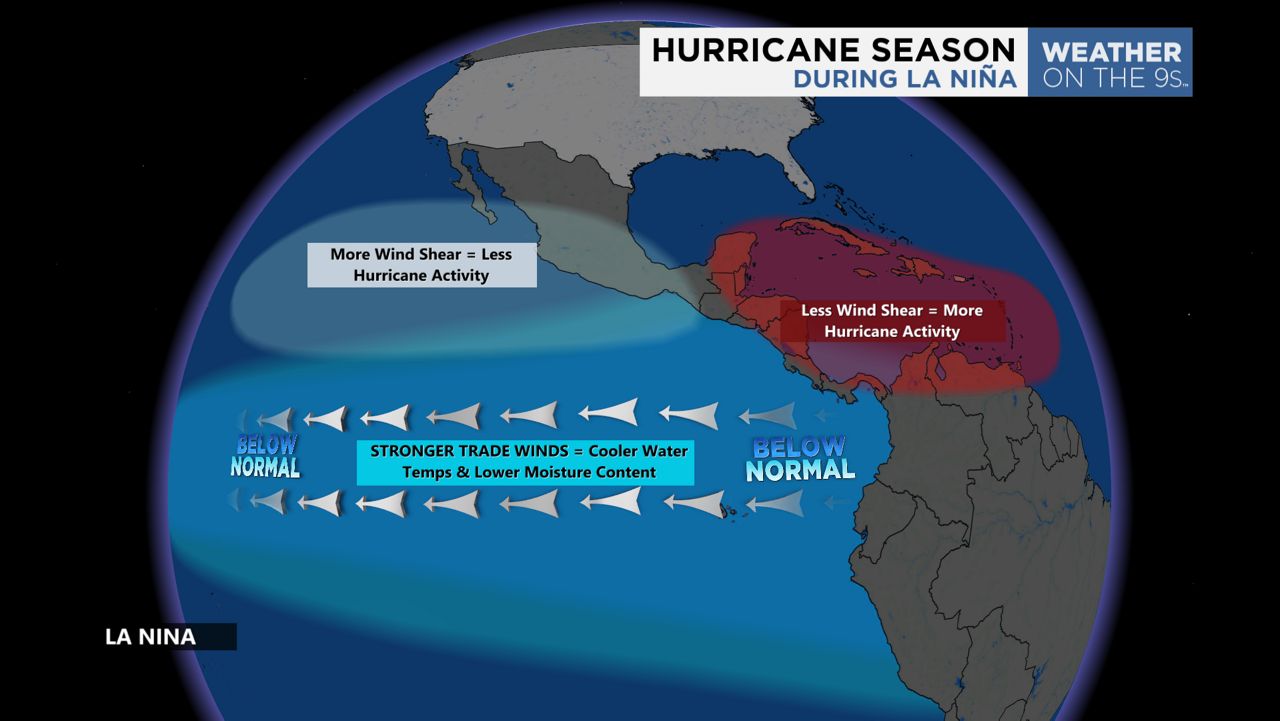After a wet El Niño winter across Florida, we will see Central Pacific waters cool down again by late spring.
El Niño results from the relaxed trade winds in the equatorial Pacific, leading to less upwelling off the South American coast.
With less upwelling, sea surface temperatures warm in the central Pacific, leading to an El Niño pattern.
These warmer Pacific water temperatures can determine weather patterns across other parts of the world.
This year, it has led to an unusually wet winter across the state of Florida.
Forecast
Trade winds have already picked back up a bit in the equatorial Pacific, cooling down the Central Pacific waters in January and February after a December peak.
We are still in a strong El Niño pattern as of Feb. 2024. However, waters are expected to continue to cool with neutral conditions (near normal) likely arriving around May this year.
In fact, a weak to moderate La Niña could develop by September.
La Niña
La Niña is the exact opposite of El Niño. Here, trade winds strengthen over the equatorial Pacific, leading to more upwelling.
This brings cooler water to the surface, so sea surface temperatures in the equatorial Pacific drop to below normal.
La Niña can have an influence on the Atlantic Hurricane season and it could arrive just in time for the peak.
During a La Niña summer and fall pattern, shear increases in the Pacific, but decreases in the Atlantic.
Shear refers to upper level winds that can inhibit tropical storm and hurricane growth.
During a typical La Niña hurricane season, above normal activity is expected in the Caribbean.

Overall, it is still a tough call for this upcoming hurricane season as La Niña is not expected to develop until after the start of the season and it will likely be on the weaker side.
Other factors, including water temperatures in the Atlantic and Saharan dust, can affect the season.
Our team of meteorologists dives deep into the science of weather and breaks down timely weather data and information. To view more weather and climate stories, check out our weather blogs section.

